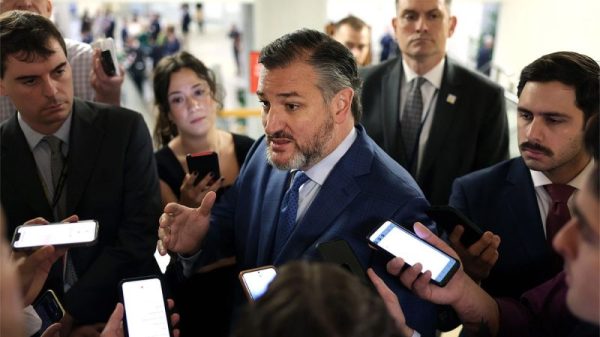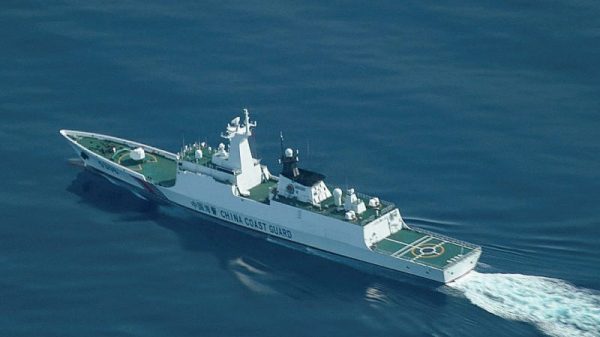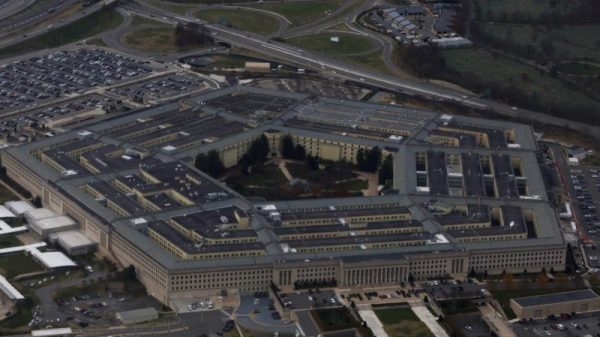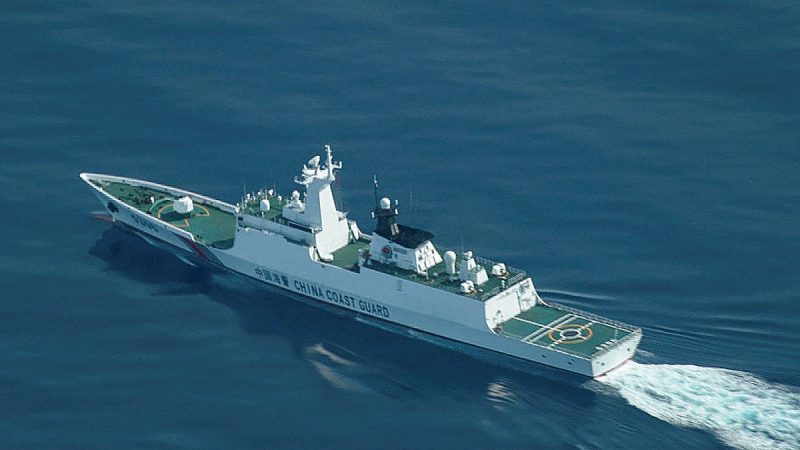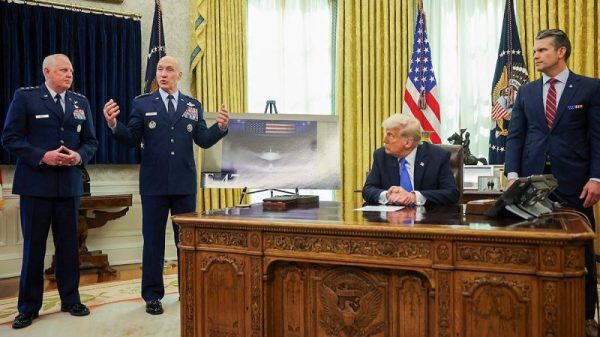Instead of waging a bloody battle that could ignite a clash between nuclear-armed states, China may be betting it can conquer Taiwan without firing a shot — by choking off the island’s fuel and electricity until its government capitulates.
China’s campaign wouldn’t start with missiles but with paperwork and patrol boats — ‘routine’ inspections, new customs rules and cyber intrusions designed to quietly strangle Taiwan’s imports while giving Beijing plausible deniability, according to a new report by the Foundation for Defense of Democracies (FDD).
The report warns that a successful Chinese squeeze on Taiwan’s fuel would ripple far beyond Asia. With the island producing most of the world’s advanced semiconductors, any prolonged power outage could halt global electronics and defense manufacturing — hitting U.S. supply chains and markets almost immediately.
‘Beijing’s goal isn’t to invade today, but to make Taiwan believe resistance is futile tomorrow. Its gray-zone campaign is a strategy of slow-motion strangulation — one that risks a sudden shock as Chinese ships and aircraft surge around the island,’ report author Craig Singleton said.
The findings stem from a tabletop exercise conducted this summer by FDD and Taiwan’s Centre for Innovative Democracy and Sustainability at National Chengchi University. The simulation, called ‘Energy Siege,’ tested how the Chinese Communist Party might escalate from bureaucratic interference to a full-blown energy quarantine.
Teams representing China, Taiwan, the United States, Japan and other allies wargamed a monthslong campaign in which Beijing throttled Taiwan’s fuel imports through ‘gray-zone’ tactics — administrative slowdowns, cyberattacks and disinformation — all while maintaining plausible deniability. The exercise found that a prolonged squeeze on Taiwan’s liquefied natural gas (LNG) could cripple its electrical grid within weeks and trigger a global chip shock.
The report warns that cyber operations and propaganda would be central to Beijing’s playbook. Chinese hackers have already doubled successful intrusions into Taiwan’s energy grid over the past year, and the exercise envisioned them embedding malware in LNG terminals and power-plant control systems to disrupt shipments and distribution.
At the same time, Beijing would unleash a barrage of false narratives — rumors of blackouts, fuel hoarding and government incompetence — to erode public trust and fracture morale. ‘For Beijing, disinformation is not a sideshow but its primary weapon,’ the report notes, describing a campaign designed to ‘control the narrative and sap its adversaries’ will.’
Taiwan imports nearly all of its energy — half from natural gas and about 30% from coal — and holds only ‘a few weeks’ worth’ of reserves. ‘Taiwan’s three main LNG terminals and the Taichung coal offloading port are clustered along the island’s west coast, within range of the CCP’s missiles as shipments are funneled through narrow Taiwan Strait lanes,’ the report adds.
That dependency makes Taiwan one of the world’s most energy-insecure economies. A blockade or ‘energy quarantine’ could cut the island’s power generation in half within weeks — forcing leaders to decide whether to keep the lights on for hospitals or for chipmakers like TSMC and UMC, Singleton and co-author Mark Montgomery write.
‘Coercion, not combat, is Beijing’s preferred weapon,’ Singleton said, adding that such a blockade would have ‘ripple effects that would reshape global markets and stability alike.’
The report also calls for the United States to expand its own LNG export capacity — particularly through new projects in Alaska — to ensure it can supply Taiwan directly and make U.S. energy a core element of the island’s resilience.
Taiwan produces around 60% of global semiconductor chips and 90% of the world’s most advanced chips, though TSMC is building a facility in Arizona to help offset that imbalance. ‘The choice to slowly shutter industrial capacity would eventually make Taiwan’s conundrum a global catastrophe when a plurality of the world’s supply of legacy chips and a supermajority of its advanced chips cease flowing,’ the report says.
The authors argue that Taiwan should build up its LNG reserves through greater U.S. supply and for the U.S. Navy to be ready to escort vessels delivering it. ‘Beijing believes pressure plus patience equals political collapse,’ Montgomery said. ‘What unnerves China isn’t Taiwan’s defiance, but its people’s ability to withstand coercion.’
Beijing’s information strategy, the report adds, would aim to quietly turn Taiwan’s population against its own government and allies — amplifying stories questioning President Lai Ching-te’s competence, spreading rumors of military fuel hoarding and blackouts, and circulating claims that the U.S., Japan and Australia would hesitate to intervene.
China’s propaganda campaign could also reach the American public, the authors warn, through efforts to ‘seed questions across U.S. online ecosystems designed to wear down the American public’s commitment to continued convoy operations.’
For now, the contest remains theoretical. But as China builds the tools to choke Taiwan’s energy supply and shape its narrative abroad, the line between peace and pressure is narrowing. The exercise suggests the first shot in the next Taiwan crisis may not be fired at all.


